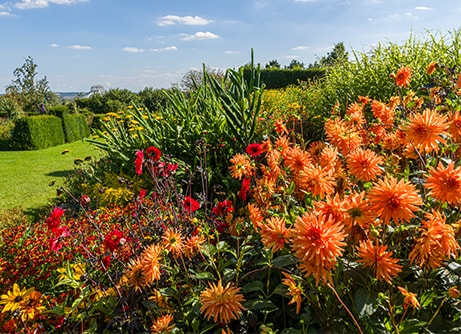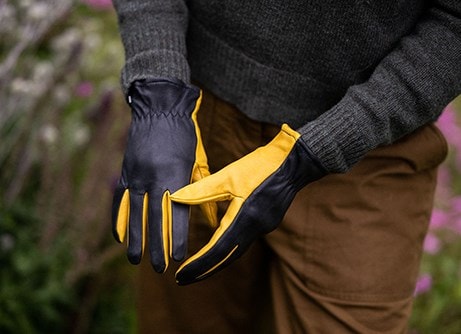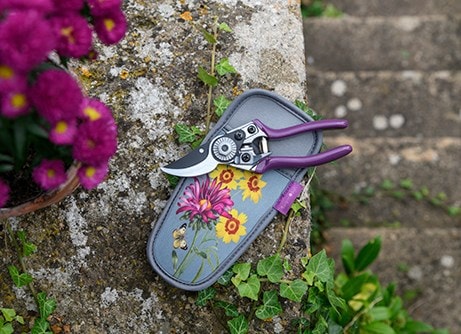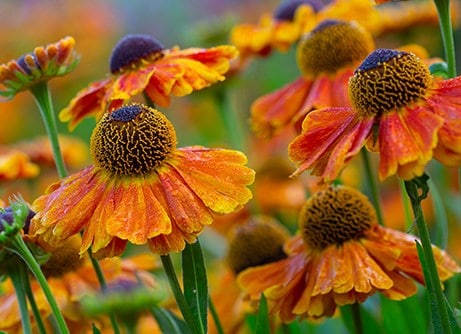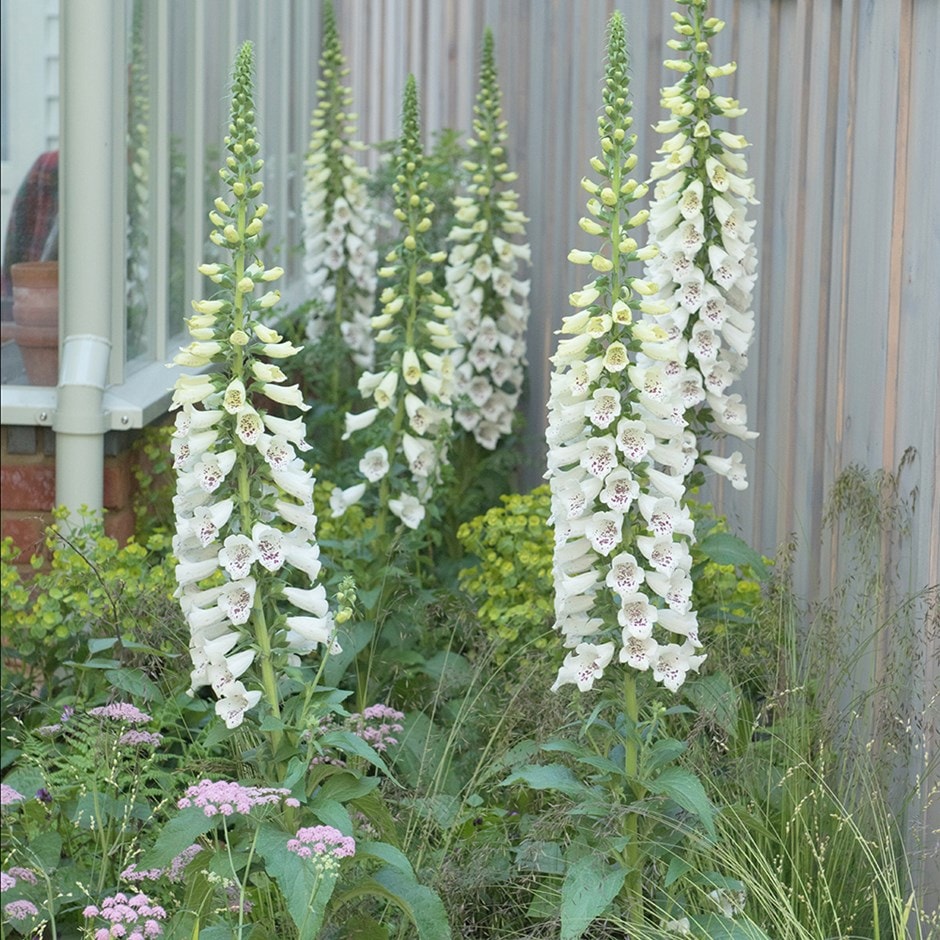
You won't be disappointed with this new foxglove if you like to see immediate results, as it will nearly always flower in its first year. The pure-white flowers that form on the upright branching stems have a pretty freckling of plum coloured markings in their throat, and if cut back promptly, there may well be a second flush of flowers later in the year.
Digitalis purpurea 'Dalmatian White' makes a dramatic vertical and architectural statement during the late spring and early summer, signalling to pollinating bees from far and wide.
Digitalis purpurea 'Dalmatian White' makes a dramatic vertical and architectural statement during the late spring and early summer, signalling to pollinating bees from far and wide.
How to care for Digitalis purpurea Dalmatian White (Dalmatian Series):
Plant into a lightly shaded, well-prepared border or woodland margin with plenty of organic matter (well-rotted compost).
Ensure that the soil is kept moist in summer. After flowering, cut back the flowered spikes to encourage more sideshoots. Cut down to the ground after flowering. Apply a generous 5-7cm (2-3in) mulch of well-rotted organic matter around the plant in early spring.
These plants are mainly short-lived perennials, although if happy they will produce plenty of new sideshoots and self-seed freely.
Ensure that the soil is kept moist in summer. After flowering, cut back the flowered spikes to encourage more sideshoots. Cut down to the ground after flowering. Apply a generous 5-7cm (2-3in) mulch of well-rotted organic matter around the plant in early spring.
These plants are mainly short-lived perennials, although if happy they will produce plenty of new sideshoots and self-seed freely.
Flowering period:
- Jan
- Feb
- Mar
- Apr
- May
- Jun
- Jul
- Aug
- Sep
- Oct
- Nov
- Dec
Eventual height:
0.6m
Eventual spread:
0.4m
Position:
Light shade
Rate of growth:
Average
Soil:
Moderately fertile, moist, well-drained soil
Hardiness:
Fully hardy
-
This perennial dies back to below ground level each year in autumn, then fresh new growth appears again in spring.
-
Humans/Pets: TOXIC if eaten
Product options

9cm pot
£8.99
In stock
(shipped within 2-3 working days)
(shipped within 2-3 working days)

3 × 9cm pots
£19.99
£6.66 each
In stock
(shipped within 2-3 working days)
(shipped within 2-3 working days)

6 × 9cm pots
£36.99
£6.17 each
In stock
(shipped within 2-3 working days)
(shipped within 2-3 working days)
1
Delivery options (pick your preferred option at checkout)
Standard Delivery£5.99
Named Day Delivery£10.99

